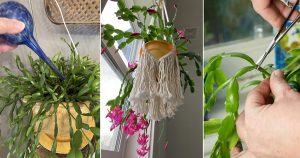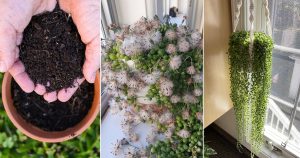Master the art of gardening and learn how to water a Snake plant so it never dies in this exclusive guide. You’ll thank us later!

Do you ever wonder if this resilient succulent, aka the Snake plant, can stay strong forever? Well, it does forgive lots of mistakes made by its owners; however, it still depends on proper care, especially with watering and soil drainage. So, learn how to water a Snake plant so it never dies!
How To Water a Snake Plant So It Never Dies?
Snake plants (Dracaena trifasciata), also popular as Mother-in-law’s Tongue, are among the most tough houseplants. However, improper watering is one of the few ways that might kill them. Let’s understand the right aways and ensure its long and healthy life.
1. Know the Watering Frequency
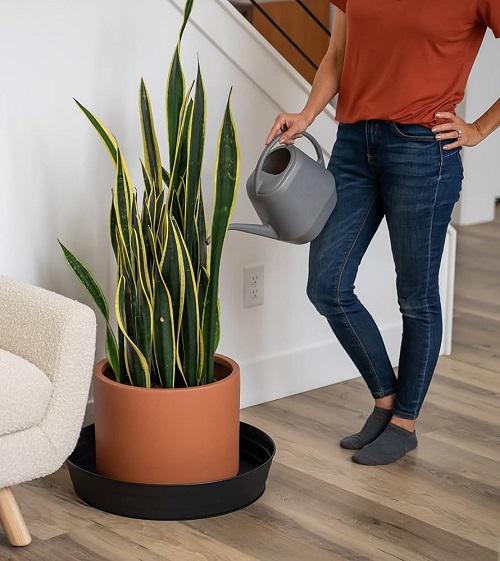
Surprisingly, Snake plants thrive on neglect when it comes to watering! Follow the golden rule—water only when the soil is completely dry since overwatering is the number one cause of root rot, which can be fatal to the plant.
Again, the watering frequency depends on the season as well. You may need to water more frequently during the spring and summer. Once every 2–3 weeks during this time seems to work fine in all kinds of temperatures and humidity.
Then lower the frequency during fall & winter to once every 4–6 weeks as the plant goes into dormancy.
Tip: Stick your finger about 2 inches into the soil; if it feels dry, it’s time to water. Otherwise, wait a few more days.
2. Follow Proper Watering Techniques
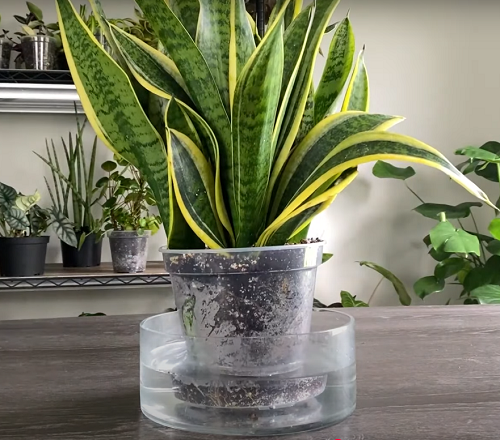
There are two specific methods for watering—bottom watering and direct watering. For the first method, place the pot in a shallow dish filled with water and let the roots soak up the moisture gradually for about 10–15 minutes. This method helps prevent excess water from accumulating at the top of the soil and causing overwatering issues.
Whereas direct watering is the one we all usually do since time immemorial! Pour water slowly around the base of the plant until the excess water drains out of the bottom holes. That’s it.
If your Snake plant is large, there’s no need for bottom watering—overhead watering is perfectly fine as long as you avoid wetting the leaves too much.
Tip: Avoid pouring water directly on the leaves, as excess moisture on the foliage can invite fungal issues. Always aim for the soil instead.
3. Use Good Water
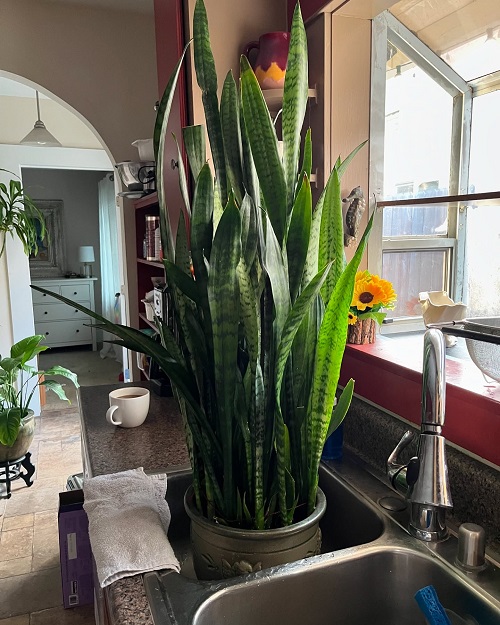
Talking of good water, what is it actually? Basically everything does great for these succulents however in urban cities the tap water can sometimes be harmful to houseplants. Chemicals like fluoride and chlorine are present in tap water as is used to treat water in highly populated cities.
Thus, regular use of tap water in plants can cause an imbalance in the soil and lead to damage. So, here is a quick fix if you must use tap water, let it sit out overnight in an open container to allow chlorine to evaporate. This makes it safer for your snake plant. Lastly, use room-temperature water to avoid shocking the roots.
4. Signs You’re Overwatering or Underwatering
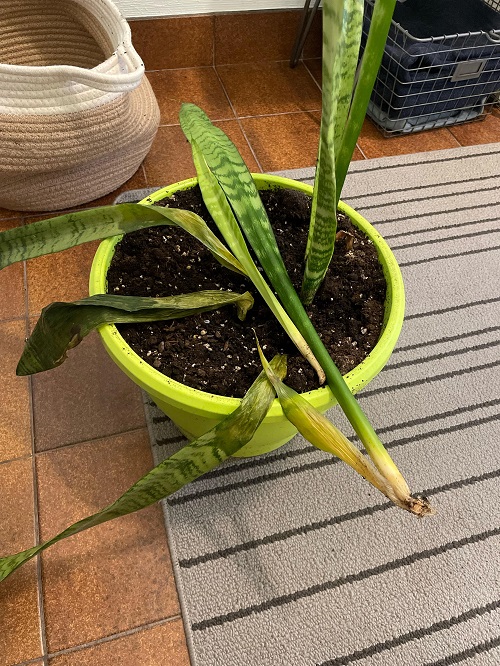
Look out for overwatering signs like—mushy, yellow, or drooping leaves, a foul smell coming from the soil (indicating root rot), or mold growth or fungus gnats around the pot. The earlier you observe such signs the faster you will be able to act according to the problem.
If you suspect root rot, remove the plant from its pot, cut off the rotten roots, and use a fungicide solution. Dip the roots for at least 20 minutes, then rinse them. Repot it in a fresh soil mix in a new container or thoroughly clean the earlier one.
Similarly, the underwatering signs are Wrinkled, curling, or dry leaves, Slow or stunted growth, and Brown leaf tips. If you want to fix brown spots, you can read our article on this too to solve these kinds of issues.
5. Best Soil for Snake Plants to Prevent Overwatering Issues
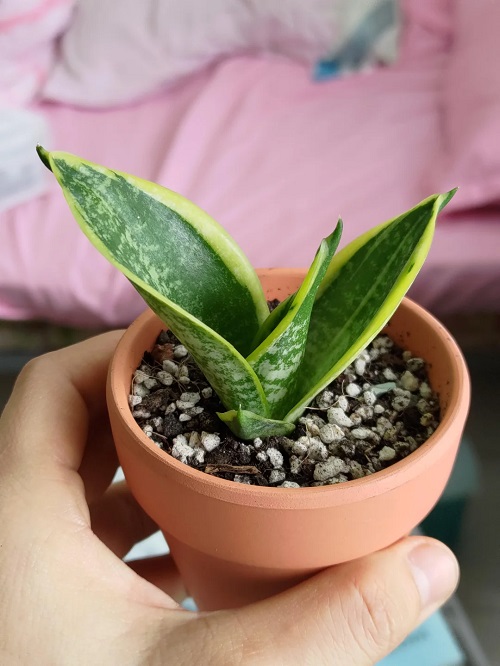
Snake plants need well-draining soil to avoid excess moisture retention. A cactus or succulent potting mix works best. Or you can prepare a well-draining mix at home. Gather 2 parts potting soil, 1 part perlite or coarse sand, and 1 part cactus mix.
Mix everything well and use it along with a pot that has drainage holes to prevent water from pooling at the bottom.
Bonus Tip: If your snake plant is sitting in overly compacted soil that holds too much water, mix in a little orchid bark for better drainage.
6. Consider Environmental Factors That Affect Watering
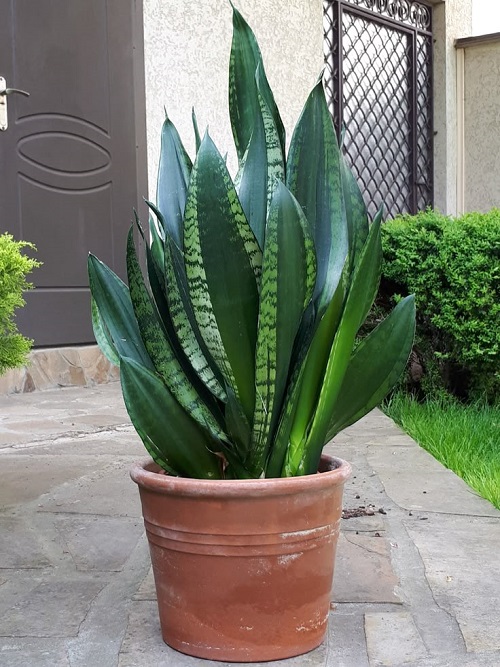
Several external conditions influence how often your snake plant needs water, like temperature & humidity, light exposure, and indoor/outdoor placement. Warmer and drier places require more frequent watering, while cooler, humid conditions reduce the need.
Again, a Snake plant placed in bright, indirect light will dry out faster than one in low light. Likewise, outdoor plants dry out quicker, especially in direct sunlight, so water accordingly.
7. Extra Tips for a Thriving Snake Plant
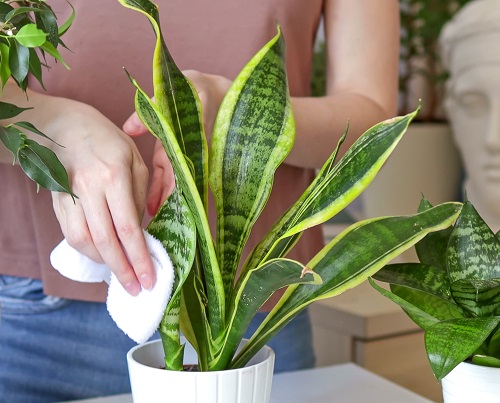
- Wipe the leaves occasionally to remove dust buildup, which allows better light absorption.
- Keep rotating the pot every few weeks to avoid a lopsided plant.
- Lastly, avoid misting–Snake plants store water in their leaves and don’t need extra humidity like their desert cousins.
Watering a snake plant the right way is simple—less is more! By following a schedule based on dryness rather than a fixed routine, choosing the right soil, and watching for signs of over or underwatering, you can ensure your snake plant thrives for years.
So, do you have more Snake plant care tips? Share them in the comments below to spread the good word to all the other plant enthusiasts like you!


